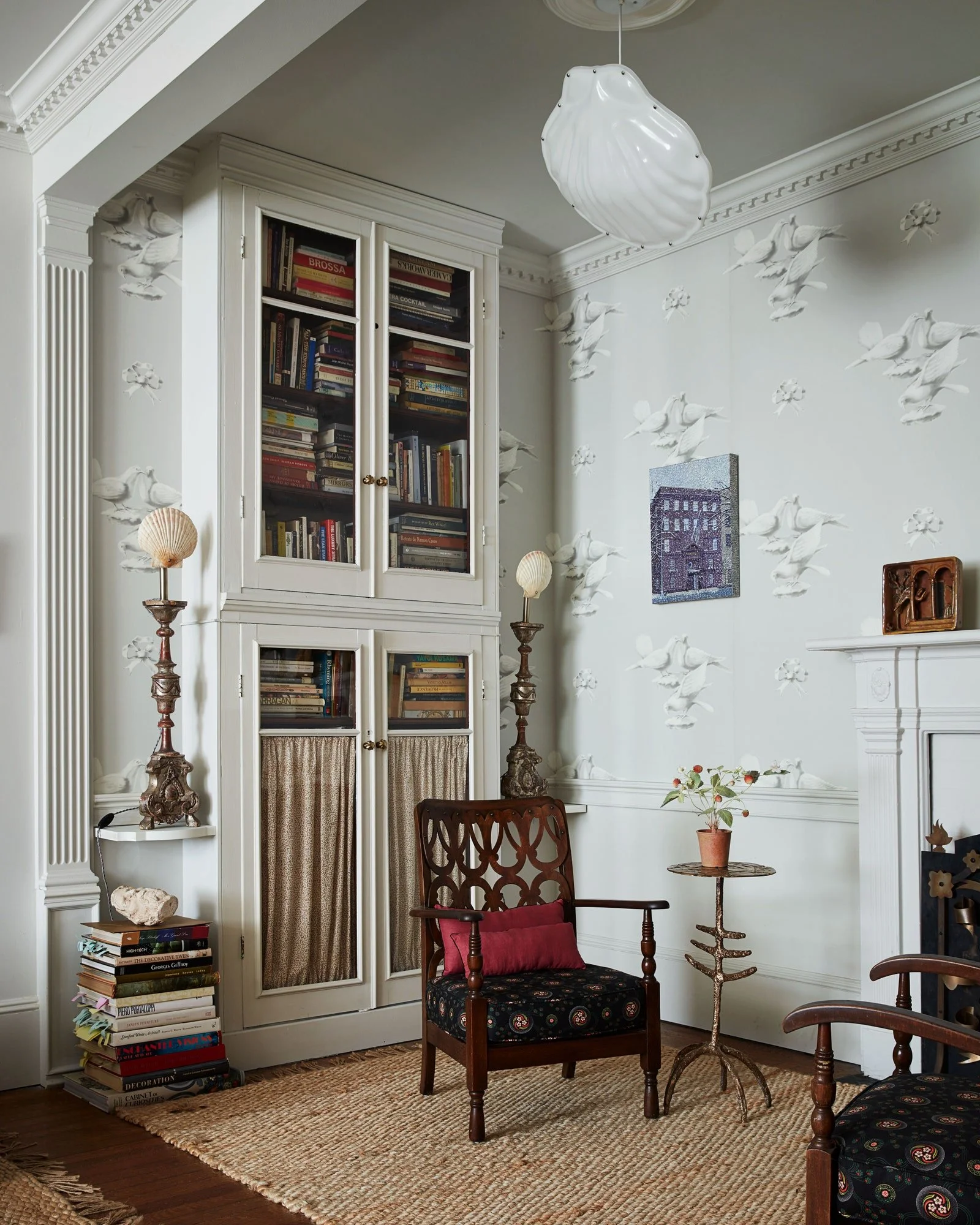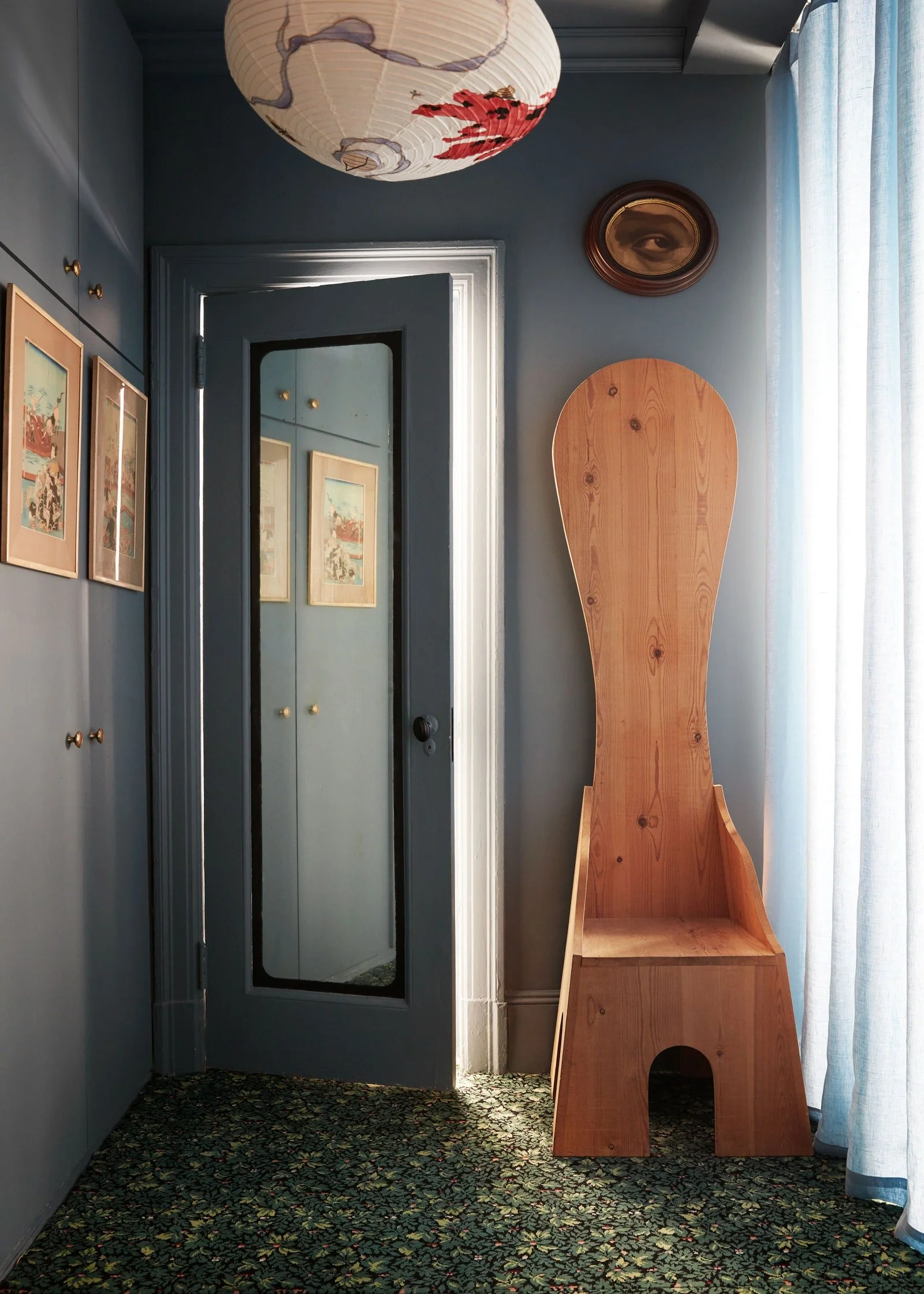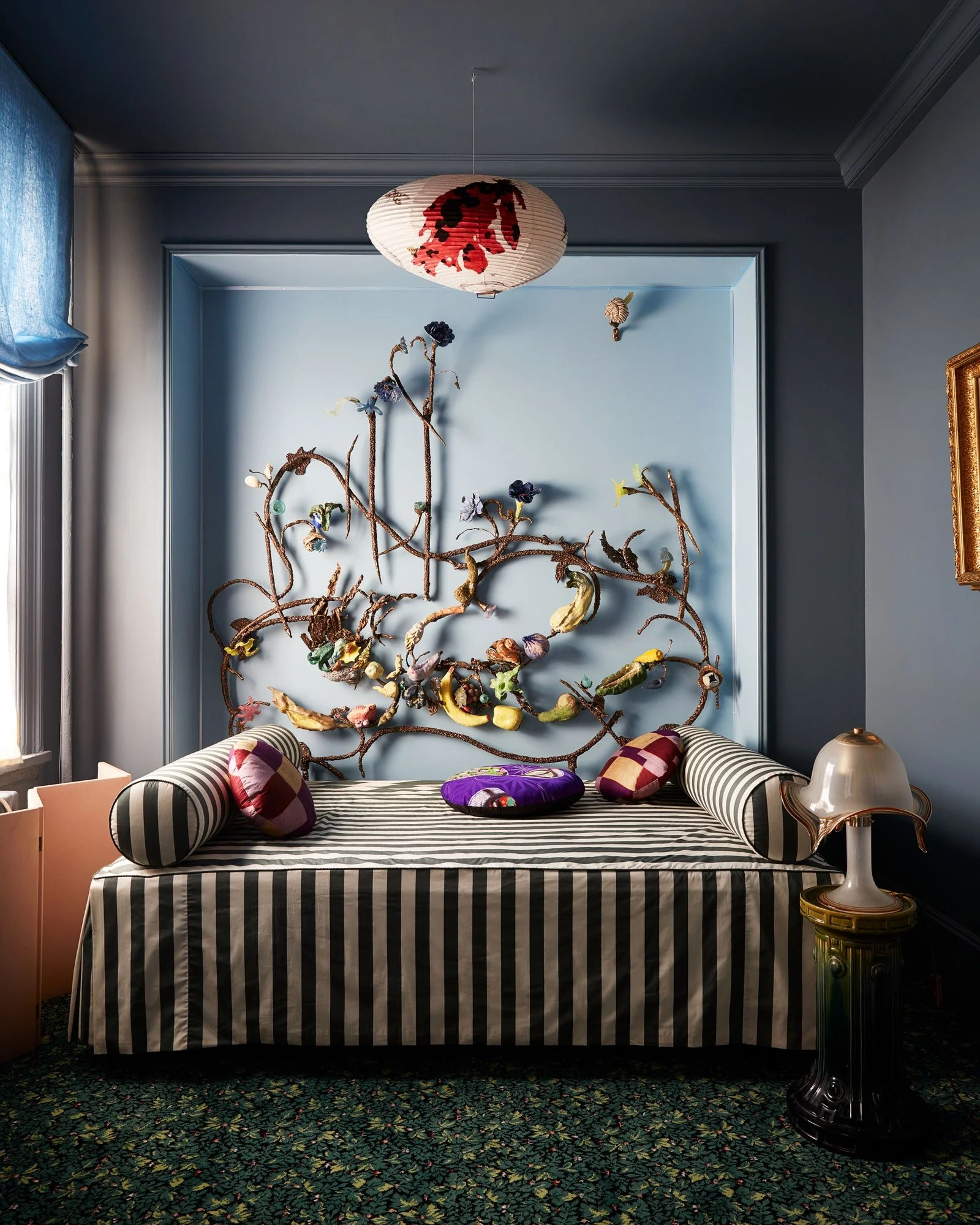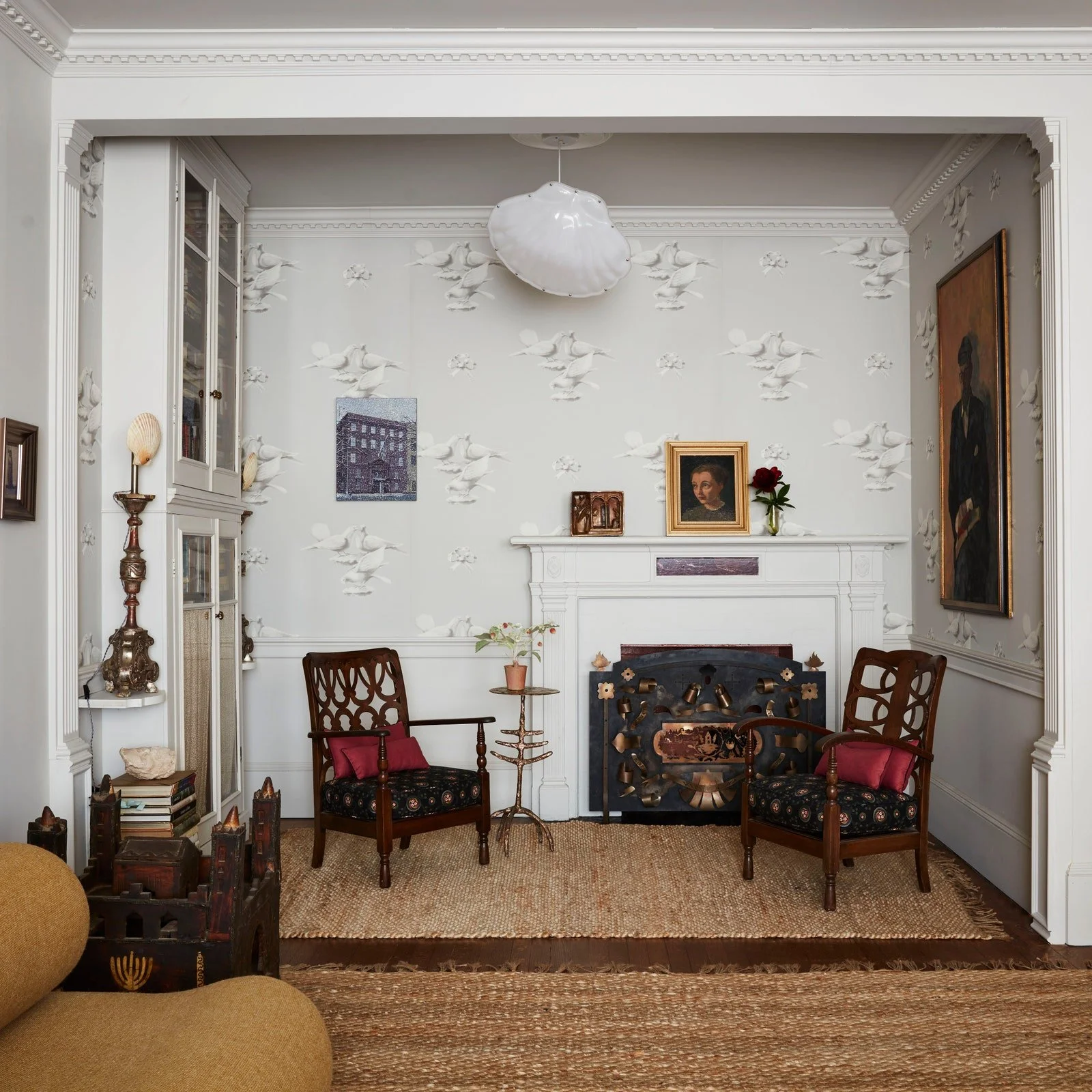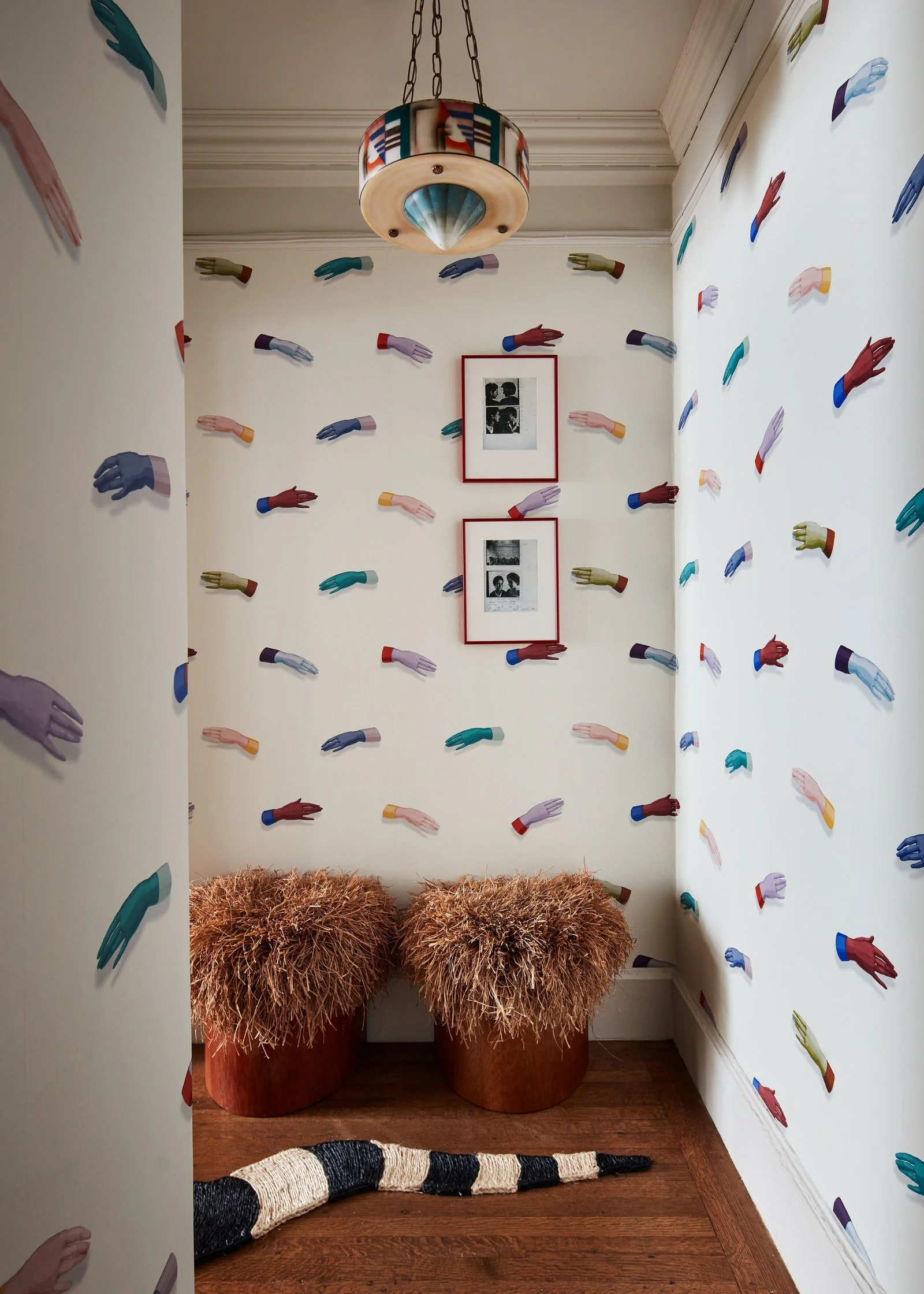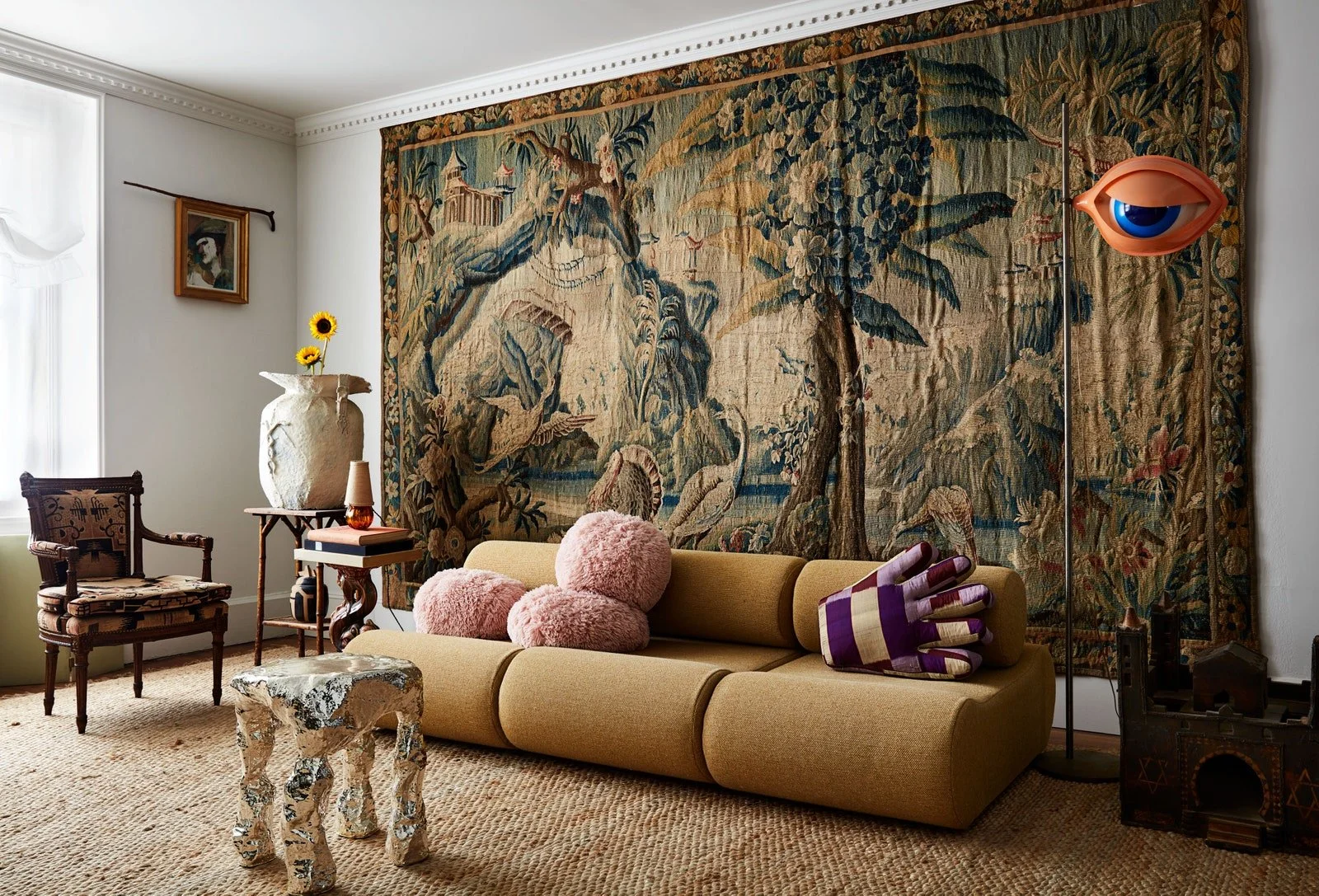Impressions of a tourtured artist
Flipping through an issue of Architectural Digest recently, I was floored when I got to the residence of interior designer Adam Charlap Hyman. To preface, I’ve never heard of Charlap Hyman before reading this article, and I still know very little of him and his life. Looking at these pictures, I can’t help but feel a certain way….do you see it?
…Like in this space I might get poked? Like I wouldn’t want to walk down this hall without thick shoes on? Like I should be careful with my body so that I don’t stick my hand where it doesn’t belong?
This is the home of a designer, who, in my opinion, strongly believes he needs to suffer for his art. The juxtaposition between playful and threatening, almost menacing, is seamlessly incorporated in a way that even further heightens the discomfort, like seeing a children’s doll come to life in Chuckie-like fashion.
Take, for instance, the bedroom. Immediately the eyes are drawn to the vine-y headboard, made of roughly textured iron that comes to a sharp end in some places and snakes around in others. For the safety of head and hand, I imagine the sleeper would need to be careful not to lazily toss and turn, potentially scratching himself on it, banging his head or getting himself tangled in these thorns. And yet, the vines are adorned with fruits, flowers, shells, and other indiscernible yet natural-looking items, things we recognize as approachable. The bed itself is nothing to jump into, with straight, unyielding lines and without a clear idea as to where to his head goes.
Moving on to the reading nook, we take an especially morbid turn. A portrait too small for the space sits next to a single red flower. Is this a remembrance of a loved one now gone? Also on the wall, an image of an Upper East Side funeral home hangs above a boney end table, sporting a rib cage that might poke a reader in the chair beside it. A large portrait, I believe of the designer’s father, looms opposite the bookcase and watches over him; does he comfort or is he waiting for Carlap Hyman to slip up?
In the entryway, I’m left questioning if all these hands reaching out are about to stroke or grab anyone walking through the door. The thistly ottomans are clearly not for taking off your shoes unless you prefer an itchy bum. Even the living room offers no authentically comfortable place to relax. Truly, in this house, there is no rest for the wicked.
None of the pieces mentioned on their own would be enough to send such a strong message of pain in play, but together, the sentiment is deafening. It seems likely that this apparent suffering is self-inflicted, perhaps the price the tenant pays to inspire his art. He literally dwells in his pain, strengthening it with his tight embrace of struggle and loss. Does he believe the only way to create brilliant art is through emotional torment?
Elizabeth Gilbert writes about how unfortunately common it is that creatives fetishize suffering as means to produce great art in her book, Big Magic: “Far too many creative people have been taught to distrust pleasure and to put their faith in struggle alone. Too many artists still believe that anguish is the only truly authentic emotional experience. They could have picked up this dark idea anywhere; it’s a commonly held belief here in the Western world, what with our weighty emotional heritage of Christian sacrifice and German Romanticism - both of which give excessive credence to the merits of agony.”
Ultimately, it is every individual’s choice what to believe, and if this interior designer changes his mind to allow his comfort, self-worth, and unhindered love to inspire his home, I have no doubt it will still be equally ingenious.

